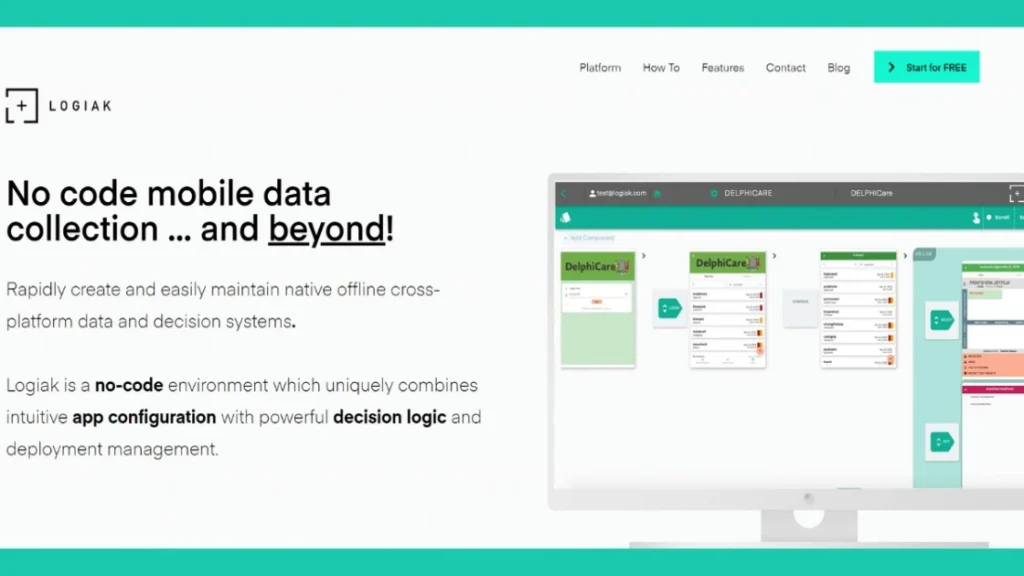Revolutionize Your Workflow With Retool: The Ultimate No-Code/Low-Code Solution
- Manish Balakrishnan
In today’s rapidly evolving technological landscape, the demand for custom software and applications is higher than ever. Organizations across industries seek to digitize their operations, streamline processes, and enhance their efficiency through tailored software solutions. However, traditional software development can be slow, expensive, and resource-intensive. This is where no-code and low-code platforms like Retool step in to transform the way applications are built, bridging the gap between technical and non-technical professionals.
Retool is a cutting-edge no-code/low-code platform that empowers individuals with varying degrees of technical expertise to create web applications and interfaces without writing extensive code. In this article, we will delve deep into Retool, exploring its key features, benefits etc.
Table of Contents
ToggleThe No-Code/Low-Code Revolution
The term “no-code” and “low-code” has become increasingly popular in the tech industry over the past few years, but what do these terms actually mean, and how do they differ?
No-Code: No-code platforms are designed to enable users with little to no programming experience to build applications. These platforms typically rely on a visual interface and pre-built components, allowing users to assemble applications like building blocks. No-code platforms are perfect for those who want to create software solutions without diving deep into coding.
Low-Code: Low-code platforms, on the other hand, strike a balance between code and no-code. They offer a visual development environment but also allow more experienced users to add custom code when necessary. Low-code platforms are suitable for projects that require a higher degree of customization but still aim to simplify the development process.
Both no-code and low-code platforms aim to democratize application development, making it accessible to a broader audience and reducing the burden on traditional development teams. Retool, as a no-code/low-code platform, allows users to leverage the benefits of both approaches.
The Rise of Retool
Founded in 2017 by David Hsu, Retool quickly gained recognition in the software development world. The platform was born out of the founders’ experiences at previous companies, where they witnessed the challenges and bottlenecks associated with building internal tools and applications. Retool’s mission is to make the creation of internal software more accessible, enabling businesses to move faster and optimize their workflows.
Retool is a versatile platform designed for businesses seeking a no-code/low-code solution to efficiently construct customized internal tools and applications. With its intuitive drag-and-drop interface, Retool empowers you to craft tailored user interfaces using a diverse array of pre-designed components. Moreover, it offers the flexibility to incorporate code for further customization, ensuring your applications meet your specific requirements. Retool is an invaluable resource for businesses in need of rapid and effortless internal tool development, especially those lacking the capacity or resources to engage a dedicated developer.
Typically, engineers take the lead in creating applications in Retool. It generally takes an engineer approximately ten minutes to grasp the fundamentals of how Retool operates, and within an hour, they start to feel at ease navigating the platform. However, the beauty of Retool lies in its accessibility. Individuals familiar with SQL can quickly adapt to building within the platform. It’s worth noting that many of today’s most active Retool builders were once non-technical end users who learned and leveraged the platform effectively.
With Retool, you have the capacity to develop applications that cater to the specific needs of any team. In practice, thousands of teams spanning customer support, marketing, operations, security, and executive departments rely on Retool apps to streamline their daily operations. It’s a testament to the platform’s versatility and how it empowers diverse teams to harness the power of custom-built applications without requiring extensive technical expertise.
Key Features of Retool
· Visual Interface: Retool’s visual interface is at the core of its no-code/low-code approach. Users can drag and drop components onto the canvas, connect them, and configure their behavior. This intuitive interface reduces the learning curve and makes application development accessible to a wide range of professionals.
· Extensive Library of Pre-Built Components: Retool provides an extensive library of pre-built components, including text inputs, buttons, tables, and charts. These components can be customized to meet the specific needs of your application. This pre-built functionality accelerates the development process and reduces the need for extensive coding.
· Data Integration: One of Retool’s standout features is its ability to connect with a variety of data sources. Whether you need to integrate data from databases, APIs, or other applications, Retool offers a seamless way to do so. This ensures that your application can access and display the information required for your business processes.
· Real-Time Collaboration: Collaboration is key in modern software development, and Retool acknowledges this by providing real-time collaboration features. Multiple team members can work on an application simultaneously, making it easy to build applications as a team, even when working remotely.
· Version Control: Retool includes version control capabilities, enabling developers to track changes made to an application and roll back to previous versions if necessary. This ensures the security and stability of your applications throughout their lifecycle.
· Custom Code: While Retool is primarily a no-code platform, it also allows users to include custom JavaScript and CSS for more advanced customizations. This feature appeals to developers who want to extend the platform’s capabilities further.
· Security and Compliance: Retool takes security seriously, providing features like single sign-on (SSO), role-based access control (RBAC), and encryption to safeguard your applications and data. This is crucial for organizations that handle sensitive information.
Benefits of Using Retool
· Fast and User-Friendly: Retool offers a drag-and-drop interface, making it accessible even for those without coding experience. You can start building custom interfaces quickly.
· Cost Savings: By reducing the need for extensive development resources, Retool can save organizations significant costs associated with custom software development. It allows non-technical team members to contribute to application development, further optimizing resource allocation.
· Empowering Non-Developers: Retool’s no-code approach empowers non-technical professionals to contribute to application development. Business analysts, data scientists, and other domain experts can create tools and applications that cater to their specific needs, reducing their reliance on IT departments.
· Scalability: Retool’s scalability ensures that applications can grow with your business. As your needs change and evolve, you can make modifications to your applications quickly and efficiently.
· Enhanced Collaboration: The platform’s real-time collaboration features foster teamwork and streamline the development process. Team members can work together seamlessly, whether they are in the same office or distributed globally.
· Integration Capabilities: Retool’s ability to connect with various data sources and APIs means you can aggregate and display information from multiple systems in a unified interface. This is invaluable for organizations with complex data ecosystems.
Retool offers a multitude of capabilities, including:
· Crafting administrative dashboards.
· Constructing user-friendly database interfaces.
· Designing internal tools to enhance productivity.
· Streamlining workflow automation.
· Generating personalized reports and beyond.
Use Cases for Retool
· Internal Tools: Retool is perfect for building internal tools that optimize and streamline various business processes. For example, you can create a customer relationship management (CRM) system, inventory management tool, or reporting dashboard tailored to your organization’s specific requirements.
· Data Dashboards: Many businesses rely on data-driven decision-making. With Retool, you can quickly create custom data dashboards that pull in real-time information from different sources, allowing for informed insights and analysis.
· Customer-Facing Applications: While Retool is primarily used for internal tools, it can also be employed to build customer-facing applications. For instance, you can create web forms, surveys, or user management systems that interact with your customers.
· E-commerce: E-commerce companies can use Retool to build custom order management systems, inventory tracking tools, and customer support interfaces, all tailored to their unique needs.
· Process Automation: Retool can be used to automate a variety of processes, such as invoice generation, purchase order approval, and employee onboarding. This streamlines operations and reduces manual workloads.
· Prototyping: Rapid prototyping is essential for validating ideas and concepts. Retool’s speed and simplicity make it an excellent choice for quickly creating prototypes that can be tested and refined.
Retool pricing plan

Retool offers a diverse range of integrations, including:
Database Integrations:
Alloy DB
Amazon Athena
AWS Redshift
Google Sheets
MongoDB
DynamoDB
Redis
Google sheet
MySQL
Google BigQuery
Snowflake
Oracle
Cassandra
CouchBD
API Integrations:
AWS S3
GitHub
AWS Lambda
Google CloudStorage
Datadog
Firebase
Firestore
Graph QL
Asana
OpenAI
Salesforce
Shopify
Slack and many more
In conclusion
Retool stands out as a game-changing platform that bridges the gap between no-code and low-code development, offering businesses a faster, more cost-effective, and flexible approach to building internal tools and applications. With its vast range of integrations and a risk-free trial offering, Retool invites businesses to explore the possibilities it presents. In an era where adaptability and agility are keys to success, Retool is a compelling choice for those looking to make a transformative impact on their internal tool development processes. Give it a try, and experience the difference for yourself.
Share
follow us

Women In The NoCode Space – Edition 1

Misconceptions About NoCode Mobile App Testing

NoCode Tool: SVGator

Nocode Tool: Hive
Explore related posts

The Importance Of OutSystems PoCs

NoCode Tool: Logiak

NoCode Tool: Adalo











